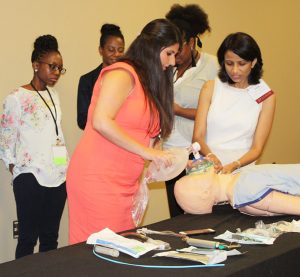Metro Areas Increasingly Dominated by Single Insurance Companies
In an analysis of competition in health insurance markets across the U.S., a study conducted by the American Medical Association found that in 169 of 389 metropolitan areas (43 percent), a single health insurer had at least a 50 percent share of the market. This represents an eight percent increase in such markets over just two years. The finding comes from the newly released 2017 edition of the AMA’s Competition in Health Insurance: A Comprehensive Study of U.S. Markets, which examines market concentration in 2016.
High market concentration tends to lower competition among commercial health insurers. These markets become ripe for the exercise of health insurer market power, which harms patients by raising premiums above competitive levels.
The AMA study presents the most comprehensive data on the degree of competition in health insurance markets across the country, and is intended to help researchers, policymakers and regulators identify markets where consolidation among health insurers may cause anti-competitive harm to patients and the physicians who care for them.
“After years of largely unchallenged consolidation in the health insurance industry, a few recent attempts to consolidate have received closer scrutiny than in the past, including the proposed mergers of Anthem and Cigna, as well as Aetna and Humana,” said AMA President David O. Barbe, M.D. “Previous versions of the AMA study played a key role in efforts to block the proposed mega-mergers by helping federal and state antitrust regulators identify markets where those mergers would cause anti-competitive harm.”
The 2017 edition of AMA’s Competition in Health Insurance: A Comprehensive Study of U.S. Markets offers the largest and most complete picture of competition in health insurance markets for 389 metropolitan areas, as well as all 50 states and the District of Columbia. The study is based on 2016 data on commercial enrollment in fully and self-insured health maintenance organization (HMO), preferred provider organization (PPO), point-of-service (POS), public health exchange and consumer-driven health plans (CDHP).
In addition to assessing competition in the commercial health insurance market at large, the study also separately examines competition for the main plan types, including HMO, PPO, POS, and the exchanges.
The prospect of future consolidation in the health insurance industry should be viewed in the context of the lack of competition that already exists in most health insurance markets. According to the AMA’s latest study:
- A significant absence of health insurer competition was found in 69 percent of metropolitan areas. These markets are rated “highly concentrated” based on federal guidelines used to assess the degree of competition in a market.
- In 43 percent (169) of metropolitan areas, a single health insurer had at least a 50 percent share of the commercial health insurance market, compared to 40 percent (156) in 2014.
- Anthem has a bigger geographic footprint than any other health insurance company in the United States. Anthem was the largest health insurer by market share in 82 of 389 metropolitan areas examined by the AMA. Health Care Service Corp. was second with a market share lead in 42 metropolitan areas, followed by UnitedHealth Group with a market share lead in 26 metropolitan areas.
- The 10 states with the least competitive commercial health insurance markets were: 1. Alabama, 2. Delaware, 3. Hawaii, 4. South Carolina, 5. Louisiana, 6. Michigan, 7. Kentucky, 8. Vermont, 9. Alaska, and 10. Illinois.
- The commercial health insurance market in 27 states became more concentrated between 2014 and 2016.
- The 10 states that experienced the largest increase in market concentration between 2014 and 2016 were: 1. Kentucky, 2. Alaska, 3. South Carolina, 4. Mississippi, 5. South Dakota, 6.Oklahoma, 7. Vermont, 8. Arkansas, 9. Nevada and 10. New Mexico.
Competition in Health Insurance: A Comprehensive Study of U.S. Markets is free to AMA members. The study is also available to non-members. To order a copy, visit the online AMA Store, or call (800) 621-8335 and mention item number OP427117.
Editor’s Note: Credentialed members of the media can obtain a free copy of the AMA’s newest study on competition in the nation’s health insurance industry by contacting AMA Media & Editorial at: (312) 464-4430.
Posted in: Insurance
Leave a Comment (0) →










 While encouraged to attend many of the general sessions, such as the Ellann McCrory, M.D. Leadership Lecture with Auburn University Basketball Coach Bruce Pearl and the Jerome Cochran, M.D., Lecture with James B. McClintock, Ph.D., concurrent sessions were set aside to engage these young physicians just starting their medical practice. Medical Association Partner Regions Bank offered two sessions, Banking Basics for Residents and Students and Maximizing Your Personal Wealth, while Sirote & Permutt, P.C., discussed Contract Negotiations. Zalak Patel, M.D., with the UAB School of Medicine, Montgomery Regional Medical Campus, offered a hands-on Basic Airway Management Skill Session.
While encouraged to attend many of the general sessions, such as the Ellann McCrory, M.D. Leadership Lecture with Auburn University Basketball Coach Bruce Pearl and the Jerome Cochran, M.D., Lecture with James B. McClintock, Ph.D., concurrent sessions were set aside to engage these young physicians just starting their medical practice. Medical Association Partner Regions Bank offered two sessions, Banking Basics for Residents and Students and Maximizing Your Personal Wealth, while Sirote & Permutt, P.C., discussed Contract Negotiations. Zalak Patel, M.D., with the UAB School of Medicine, Montgomery Regional Medical Campus, offered a hands-on Basic Airway Management Skill Session. Community Hospital, Inc., (General Surgery, Radiology and Transitional Year)
Community Hospital, Inc., (General Surgery, Radiology and Transitional Year)

